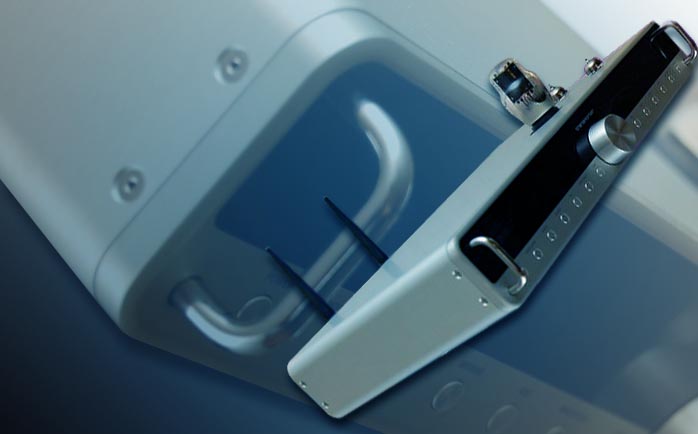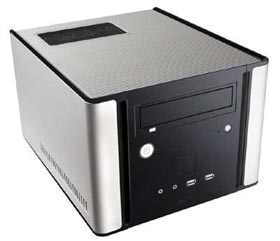|
This review page is supported in part by the sponsors whose ads are displayed below
|
|||||||||||||||
 |
|||||||||||||||
 |
|||||||||||||||
 |
|||||||||||||||
Reviewer: Srajan Ebaen Source: APL Hifi NWO 3.0-GO; Raysonic CD168; Ancient Audio Lektor Prime Preamp/Integrated: ModWright SWL 9.0SE; ModWright LS-36.5; Music First Audio Passive Magnetic; Bel Canto Design PRe3; Wyetech Labs Jade; Supratek Cabernet Dual; Melody HiFi I2A3; Eastern Electric M520; Yamamoto HA-02; APL HiFi UA-S1 Amp: 2 x Audiosector Patek SE; 2 x FirstWatt F4; Yamamoto A-08S; Bel Canto e.One S300; Fi 2A3 monos Headphones: AKG K-1000 w. hardwired Stefan AudioArt harness; audio-technica W-1000 Speakers: Zu Cable Definition Pro in custom lacquer; Mark & Daniel Ruby and Maximus-Monitor with Omni-Harmonizer; WLM Grand Viola MkII Monitor with Duo 12 passive subwoofer, Duo amp and Sys VI active crossover; DeVore Fidelity Nines; Rethm Saadhana Cables: Crystal Cable Ultra loom, Crystal Cable Reference power cords; Zanden Audio proprietary I²S cable; Zu Cable Varial, Gede, Libtech and Ibis; Stealth Audio Cable Indra, MetaCarbon & NanoFiber [on loan]; SilverFi interconnects; double cryo'd Acrolink with Furutech UK plug between wall and transformer Stands: 2 x Grand Prix Audio Monaco Modular 4-tier Powerline conditioning: 2 x Walker Audio Velocitor S fed from custom AudioSector 1.5KV Plitron step-down transformer with balanced power output option; Furutech RTP-6 on 240V line Sundry accessories: GPA Formula Carbon/Kevlar shelf for transport; GPA Apex footers underneath stand, DAC and amp; Walker Audio Extreme SST on all connections; Walker Audio Vivid CD cleaner; Walker Audio Reference HDLs; Furutech RD-2 CD demagnetizer; Nanotech Nespa Pro; Acoustic System Acoustic Resonators Room size: 16' w x 21' d x 9' h in short-wall setup, with openly adjoining 15' x 35' living room Review Component Retail: $2,000 for mod ($3,600 if ModWright supplies pre-modded unit) |
|||||||||||||||
 |
|||||||||||||||
By May of '07, Dan Wright of ModWright had looked closely into the gleaming $2,000 Transporter by Slim Devices and found it "not inexpensive but pretty amazing for what it does - digital i/o ports, wireless, built-in but defeatable volume control etc. I poked around inside and confirmed my suspicion that the clock circuits and power supply regulation were quite good. The analog op-amp stage was pretty typical however and needed attention. I was thinking tubes and no external power supply. I had a few tricks up my sleeve and believed that we could do something pretty trick with this. The AKM DAC chip was very good and had differential outputs to boot. The SMPS might need to be shielded or relocated but would remain as it supplied only basic functions and nothing in the critical audio signal path. While it was radiating some noise, shielding or relocation would address that." By August, Dan had arrived at a single-ended Transformer platform with a single 6CG7 dual triode, an internal solid-state rectified power supply without choke regulation and a Hammond power transformer. For comparison, he used his Signature Truth Mod Sony 9100ES running on 2 x 5687s, an outboard tube-rectified power supply with choke current regulation and oversized toroidal transformer. The transporter played back FLAC files wireless from his laptop, the Sony RedBook from its own transport and through its valve output stage. "The Sony still had the edge specifically in terms of weight, body and ultimate bass response. I believed that this could be improved if we used the oversized toroidal transformer in the Transporter with our tube-rectified supply. We might also add a second tube for the signal path." Dan was chasing his Sony's two-box performance with a slicker integrated one-box solution. He later confirmed that his proven 36.5/9.0SE power transformer would -- barely -- fit inside the transporter without causing noise issues. |
|||||||||||||||
 |
|||||||||||||||
|
In the stock Transporter, the WIFI receiver, processors, analog and digital supplies, DACs, precision clock circuit, Jung Super Regulator voltage regs for the DAC, master clock and stock analog stage and the actual output stage all reside on a long shallow PCB that runs the full length of the rear of the unit and leaves a lot of empty real estate upfront.
|
|||||||||||||||
Stage Two involved the big transformer and 5U4 tube rectification, still with the single 6CG7 output tube. "The next step will be to design a single board to house the power supply circuitry and output stage with two tubes to make everything fit precisely inside the Transporter. I believe that our custom Electraprint output transformers will be used to create the balanced outputs while offering a lower output impedance." |
|||||||||||||||
|
| |||||||||||||||
Dan decided against the 5687 of the SWL 9.0SE preamp because "I didn't feel that it was a good fit here tonally and also because I wanted to use a tube that was readily 'rollable'. The 6DJ8/6922/7308 family is compatible with the 6N1P, 6H30 and 6CG7/6FQ7 (9-pin equivalent of 6SN7) if you do it right. Add to this a number of rectifier tube options (5U4G, 5U4GB, 5V4 and 5V4GB) and you have a lot of flexibility." The following statement really sums up ModWright's mission for their modified Transporter: "The Transporter is all about convenience, flexibility and extreme cool factor. To give this unit world-class sonics would turn it into an ideal source. It has digital inputs and digital outputs so you can use it with a computer server or laptop, CD/DVD transport, feed it XM radio or other digital sources and all will benefit from the ModWright tube analog output stage. Building it all into one box makes it elegant, clean and allows for much greater wife acceptance factor. Heck, my wife has raised her eyebrows at it. I'd be working away on the laptop in the kitchen switching albums/tracks while she cooks dinner and doesn't understand at first but thinks it is very cool. In short, convenience is one thing and worth a lot. If we can make it convenient and high performance, then we have done our job!" |
|||||||||||||||
 |
|||||||||||||||
| With the low-power fan-less Transporter, Slim Devices upgraded their platforms of SqueezeBox 2 (Burr-Brown PCM 1748) and SqueezeBox 3 (Burr-Brown PCM1748KE) with the AKM AK4396 multi-bit delta-sigma DAC for a claimed S/N ratio of minus 106dB at 0.00005% THD and 120dB of dynamic range. The central non-audio processor is a 325MHz 8-way multi threaded RISC with 64MB of high-speed RAM and 16MB of program flash on Slim Devices' self-updating firmware. Network settings are stored in non-volatile memory, with "auto-configuration for most networks and easy setup for wireless networks." The defeatable, dual-antenna WiFi protocol locks to 802.11b/g at 54Mbps and supports WPA personal, WPA2-AES and 64/128bit encryption. Bridging allows Ethernet devices to connect through the wireless interface. The RJ-45 Ethernet port offers true 100Mbps throughput and auto-detects full and half duplex modes with automatic polarity correction. Maximum allowable Ethernet cable length is 100 meters (328 feet). An RS-232 serial port interfaces with Crestron and other home automation systems. |
|||||||||||||||
| Beyond computer connectivity, the Transporter offers RCA and balanced audio outputs and can receive digital signal via RCA, Toslink and AES/EBU (plus the above Ethernet and wireless). The "aircraft-grade aluminum case in black or clear anodized" houses a large 640 x 32 pixel vacuum fluorescent display with "high-speed, full-screen visualizers, bitmapped graphics, multiple fonts, animation images and brightness control." The 32-button backlit infrared remote runs a standard 38kHz protocol and includes "SmartScroll algorithms to quickly access favorite songs within large lists. The data format is fully compatible with most programmable and universal remotes (Harmony); templates are available for Pronto and other remotes; and it supports discrete on/off and other shortcut code." |
|||||||||||||||
 |
|||||||||||||||
| General dimensions with feet (no tubes) are 17.0"W x 3.03"H x 12.25"D (433mm x 77mm x 311mm). Where dedicated high-end music servers from certain companies retail from $12,000 to $20,000+, the Transporter merely asks for a computer with hard-drive space to perform the same function. And, those who've lusted after a ModWright tube DAC cash in their chips as well. Could this be the digital source solution for those reluctant late adopters who for years acknowledged the inevitable download/streaming future but, for the time being, remained loyal to jewel boxes and their one-disc-at-a-time routine? The defeatable WiFi should appeal to purists who favor a hardwired, always-on Ethernet connection for their audio sanctuary. The plethora of digital inputs meanwhile coexists with currently owned statement CD transports until such days when solid-state memory playback has annihilated disc-spinning playback (CD/DVD or hard-drive) entirely. The less-is-more crowd can go amp-direct with the Transporter's tube-buffered variable outputs while diehard triode fanatics could be swayed to overlook the Transporter's cold computer heart by focusing instead on the obvious thermionic hardware on deck. |
|||||||||||||||
 |
|||||||||||||||
 |
|||||||||||||||
In short, comprehensive appeal meets colossal cool. With hot sonics to boot? Has that time finally arrived so us old-timers must get off our resistant arses, down with the hipsters and on with da future? Therein lies the tale. Lest you think that a music server requires a home network, think again. Neal Van Berg's MusicVault with 500GB or 1TB of storage is a stand-alone server with CD/DVD drive that will auto rip your CDs to hard drive as FLAC files and arrives preloaded with the latest version of Slimserver. It communicates with your Transporter wirelessly or via hardwired Ethernet link without setup hassles. Introductory pricing is $749.95/ $949.95 for the two different storage capacities. And the Music Vault isn't a space hog. It of course also works with the Squeezebox or Roku Sound Bridge. Hip hip hurray? |
|||||||||||||||
|
| |||||||||||||||
 |
|||||||||||||||
 |
|||||||||||||||